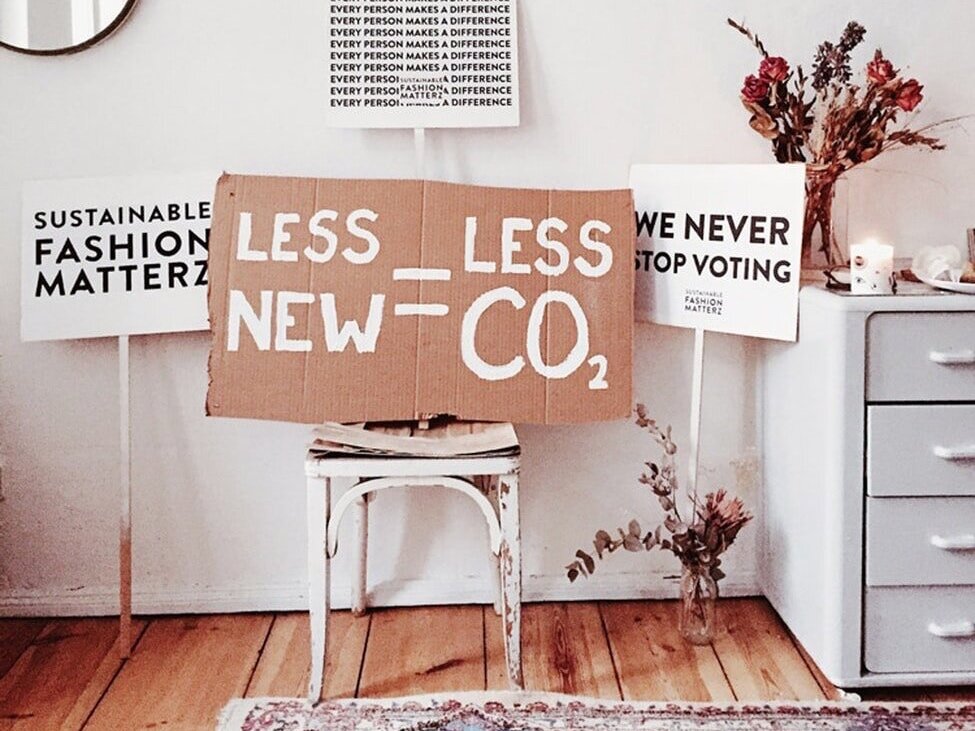5 ways to shop more sustainably
When we at Collective Fashion Justice talk about shopping sustainably, what we really mean is shopping with total ethics in mind. Total ethics fashion respects the life of all animals – human and non-human, as well as the planet. We cannot sustain the fast pace of fashion which is destroying our planet, and just the same, we cannot sustain injustice and harm.
So, here’s how we can shop in a way that is caring, not harmful…
The way that we dress matters
When we buy garments, accessories and shoes, we buy into a supply chain. A supply chain is made up of all the different activities and elements required to produce a garment – from farming, to sewing, and so on. This supply chain may be a great one, or it might be one that harms the environment, non-human and human animals.
Fashion brands can’t exist without their customers, so it’s important we consider what brands we fund.
How can we make sure we are dressing to reduce harm?
There are plenty of things we can do to support a total ethics fashion system, and to divest from parts of the fashion industry which cause harm. To start off simply, here are five things that everyone should consider doing before they buy.
ONE: Ask questions – to yourself, and to brands
How are we to know if a fashion brand causes harm or not, if we don’t ask?
Brands doing good are on the whole, very vocal about this. They’re proud to be doing the right thing! Have a look on a brand’s website to learn more about the ethics and sustainability of what they sell, and if there are still more questions, make sure to ask them.
Three simple questions it’s important to know about a brand before buying from them are:
Are your garment workers paid a living wage?
Are the materials sustainable, and what evidence supports that claim?
Is this garment free from any animal-derived materials, glues and dyes?
Of course there are more questions to consider (aren’t there always!), but this is an extremely good and well-rounded place to start, which can help us buy clothes that we can feel proud to wear.
As well as asking brands questions, it’s important to ask yourself questions before making a fashion purchase.
Some of these questions might be:
Will I still love this in a year, or two years?
Is this something I’ll get to wear often?
Do I really need this?
TWO: Choose materials carefully
What our clothing is made of matters. Why? Because to produce some materials, huge amounts of greenhouse gas emissions are released into the atmosphere, massive amounts of water must be used, or enormous amounts of land must be cleared.
What’s more, sometimes materials are made with forced and unjust labour – such as cotton or silk farmed by children. Of course, some materials are also made from slaughtered and exploited animals. There are lots of reasons to consider what your clothes are made of carefully.
Overall, it’s best to look for materials that are transparently, sustainably and ethically farmed or made, that perhaps are recycled, that are animal-free. Avoiding virgin synthetic fibres that shed microfibres is a good idea too, as much as possible.
This may sound complicated, and it can be! But consider what you can, and take a look at our list of total ethics materials that we think are great choices.
THREE: Seek out total ethics clothing, shoes and accessories
If you’re buying new, make sure to buy well. Ask those questions before you buy something, and make sure that to the best of your ability, you are making a choice that does no harm.
If you’re thinking of buying fast fashion, or unethical fashion. Pause for a moment and think about if that’s really the best choice. Maybe even follow this flow chart!
FOUR: Consider pre-loved first
There are already so many beautiful clothes in the world, so we should wear them! Before you buy something new, consider if you can find it second-hand, vintage or pre-loved.
Perhaps you could do a clothing swap with a friend, you could try a second-hand clothing app like Depop, you could look around at a local community or digital marketplace, go to a thrift store, or a store full of curated vintage pieces.
When you shop this way, there are far less questions that need to be asked before buying, and you’re extending the life of a garment, instead of it going to waste.
FIVE: Buy less, buy what you love, and make it last
Did you know that globally, the equivalent of a rubbish truck full of textiles and clothing is sent to landfill every second? Or that on average, people only wear 50% of the clothing in their wardrobe anyway?
Fast fashion has sped up the amount of clothing we produce at an alarming rate – with global clothing production doubling in the last 15 years, while on average, garments are being worn less and discarded faster.
One of the best ways to make our wardrobes less impactful on the world around us, is to really consider if we need to make them any bigger. We need to buy less, buy only what we love, and make what we have last. That means washing and storing them carefully, repairing them, and treating them well. Or, as Joan Crawford once said, ‘care for your clothes, like the good friends they are.’




